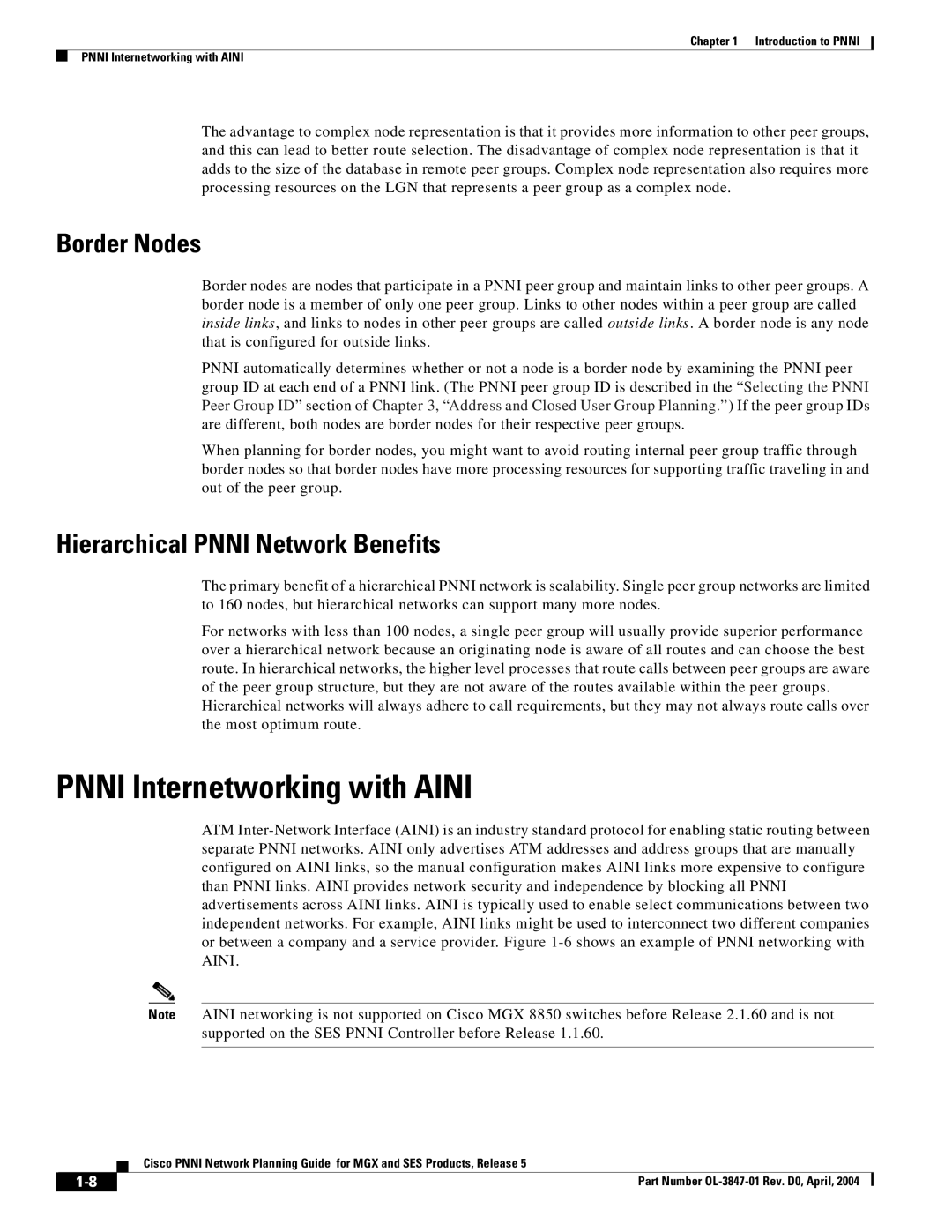
Chapter 1 Introduction to PNNI
PNNI Internetworking with AINI
The advantage to complex node representation is that it provides more information to other peer groups, and this can lead to better route selection. The disadvantage of complex node representation is that it adds to the size of the database in remote peer groups. Complex node representation also requires more processing resources on the LGN that represents a peer group as a complex node.
Border Nodes
Border nodes are nodes that participate in a PNNI peer group and maintain links to other peer groups. A border node is a member of only one peer group. Links to other nodes within a peer group are called inside links, and links to nodes in other peer groups are called outside links. A border node is any node that is configured for outside links.
PNNI automatically determines whether or not a node is a border node by examining the PNNI peer group ID at each end of a PNNI link. (The PNNI peer group ID is described in the “Selecting the PNNI Peer Group ID” section of Chapter 3, “Address and Closed User Group Planning.”) If the peer group IDs are different, both nodes are border nodes for their respective peer groups.
When planning for border nodes, you might want to avoid routing internal peer group traffic through border nodes so that border nodes have more processing resources for supporting traffic traveling in and out of the peer group.
Hierarchical PNNI Network Benefits
The primary benefit of a hierarchical PNNI network is scalability. Single peer group networks are limited to 160 nodes, but hierarchical networks can support many more nodes.
For networks with less than 100 nodes, a single peer group will usually provide superior performance over a hierarchical network because an originating node is aware of all routes and can choose the best route. In hierarchical networks, the higher level processes that route calls between peer groups are aware of the peer group structure, but they are not aware of the routes available within the peer groups.
Hierarchical networks will always adhere to call requirements, but they may not always route calls over the most optimum route.
PNNI Internetworking with AINI
ATM
Note AINI networking is not supported on Cisco MGX 8850 switches before Release 2.1.60 and is not supported on the SES PNNI Controller before Release 1.1.60.
| Cisco PNNI Network Planning Guide for MGX and SES Products, Release 5 |
Part Number |
